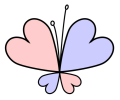One of our staff members is contributing considerably to a News Archiving service at Mu. Any well educated (Masters, PhD or above) users who wish to make comments on news sites, please contact Jim Burton directly rather than using this list, and we can work on maximising view count.
Childlove: Difference between revisions
The Admins (talk | contribs) mNo edit summary |
No edit summary |
||
| Line 1: | Line 1: | ||
__NOTOC__The term '''childlove''' or '''childlover''' is used in two senses: | __NOTOC__The term '''childlove''' or '''childlover''' '''(CL)''' was a popular community euphemism for [[pedophile]] in the 00s and was/is used in two senses: | ||
* As a label for people attracted to both boys and girls, and | |||
* As a generic term for someone who may be attracted to either boys or girls. | |||
Some had advocated the use of the childlover label to bring the boylover and girllover communities together. They believed that the communities have much to gain by joining forces rather than arguing their separate causes each on their own. They also believed that there are many similarities in girllove and boylove relationships, especially the fact that both types of relationship involve an adult and a minor, often a child. Others objected to the childlove label, although to date, it has never become a common term of reference. | |||
==Opposition== | |||
Some [[Hebephilia|hebephiles]] (for example) rejected the term because teenagers are no longer "children." The term was seen as a divisive element within the communities, thus putting the term at odds with its goal of unification. It is also observed that the term "love" is in most cases inaccurate and is therefore likely to discredit the neologism. Inclusive socio-legal terms such as [[minor attracted person]] and Youthlover are now more popular than childlove. | |||
== | ===Reactionary opposition=== | ||
A small number of people rejected the term because they believe that boylovers and girllovers have conflicting political interests. Some claim the types of relationships with children differ; that while boylovers are interested in mentorship and friendship, girllovers are more oriented toward romance. | |||
==Gallery== | |||
<gallery> | |||
File:Clomal.png|[[Rookiee]]'s Childlove Media Activism Logo - incorporating [[GLogo]] and [[BLogo]]. Created for [[Pedologues]]. | |||
File:Clogo.png|CLogo - commonly used in the 00s. | |||
</gallery> | |||
== 'Childlover' in other languages == | |||
*Quenya: hínandil | *Quenya: hínandil | ||
*Sindarin: chínandil | *Sindarin: chínandil | ||
==Links== | |||
*[https://www.mirror.co.uk/news/world-news/parents-warned-over-innocent-looking-7843597 Mirror (UK) scare story] | |||
==See also== | ==See also== | ||
*[[Minor Attracted Person]] | *[[Minor Attracted Person]] | ||
*[[Minor attracted neologisms]] - such as '''pedosexual'''. | |||
[[Category:Official Encyclopedia]][[Category:Terminology]][[Category:Terminology: MAP]] | [[Category:Official Encyclopedia]][[Category:Terminology]][[Category:Terminology: MAP]] | ||
[[Category: Countries and Cultures]][[Category:Countries and Cultures: Subcultures]] | [[Category: Countries and Cultures]][[Category:Countries and Cultures: Subcultures]] | ||
Revision as of 20:39, 8 December 2021
The term childlove or childlover (CL) was a popular community euphemism for pedophile in the 00s and was/is used in two senses:
- As a label for people attracted to both boys and girls, and
- As a generic term for someone who may be attracted to either boys or girls.
Some had advocated the use of the childlover label to bring the boylover and girllover communities together. They believed that the communities have much to gain by joining forces rather than arguing their separate causes each on their own. They also believed that there are many similarities in girllove and boylove relationships, especially the fact that both types of relationship involve an adult and a minor, often a child. Others objected to the childlove label, although to date, it has never become a common term of reference.
Opposition
Some hebephiles (for example) rejected the term because teenagers are no longer "children." The term was seen as a divisive element within the communities, thus putting the term at odds with its goal of unification. It is also observed that the term "love" is in most cases inaccurate and is therefore likely to discredit the neologism. Inclusive socio-legal terms such as minor attracted person and Youthlover are now more popular than childlove.
Reactionary opposition
A small number of people rejected the term because they believe that boylovers and girllovers have conflicting political interests. Some claim the types of relationships with children differ; that while boylovers are interested in mentorship and friendship, girllovers are more oriented toward romance.
Gallery
-
CLogo - commonly used in the 00s.
'Childlover' in other languages
- Quenya: hínandil
- Sindarin: chínandil
Links
See also
- Minor Attracted Person
- Minor attracted neologisms - such as pedosexual.

